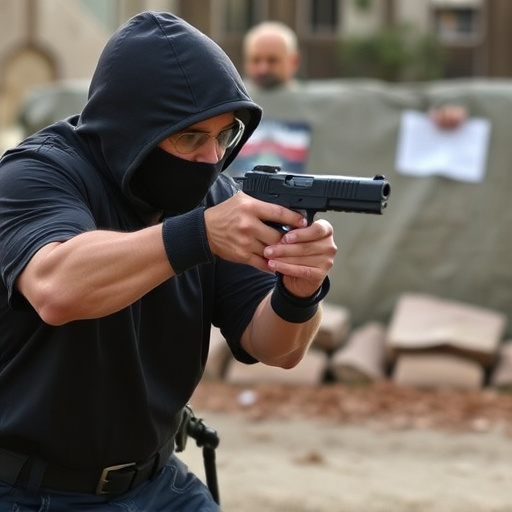Self-defense stun guns for college students utilize high voltage to temporarily disable assailants, offering non-lethal protection. Their effectiveness hinges on fabric thickness and electrical properties, necessitating proper training to maximize their utility in real-world scenarios. These compact devices provide peace of mind in diverse campus environments, empowering students to defend themselves during late-night walks or unexpected encounters.
In today’s world, understanding voltage penetration through thick clothing is a crucial aspect of personal safety, especially for vulnerable populations like college students. This article delves into the science behind voltage and its interaction with materials, shedding light on the effectiveness of self-defense tools such as stun guns. We explore practical strategies for college students to enhance their personal safety, empowering them with knowledge about non-lethal options, including self-defense stun guns, suitable for navigating potential threats in densely populated campus environments.
- Understanding Voltage and Its Behavior Through Materials
- Self-Defense Tools: Stun Guns and Their Effectiveness
- College Students' Guide to Safe Personal Defense Strategies
Understanding Voltage and Its Behavior Through Materials
Voltage, a fundamental concept in electrodynamics, represents the electrical potential difference between two points. When it encounters materials, its behavior can vary significantly, especially through thick fabrics commonly found in clothing. This phenomenon is crucial for understanding how energy transfers and interacts with different substances. In the context of self-defense stun guns designed for college students, grasping this concept is vital.
These devices emit high voltage to disrupt muscle control, offering a non-lethal way to subdue an assailant. The effectiveness depends on the ability of the current to penetrate the clothing barrier. Different fabrics have varying electrical properties, with thickness playing a significant role in voltage transmission. Understanding these interactions allows for better design and application of self-defense tools, ensuring their reliability in real-world scenarios.
Self-Defense Tools: Stun Guns and Their Effectiveness
Self-defense tools like stun guns have gained popularity, especially among college students, as a means of personal protection. Stun guns, also known as electronic control devices (ECDs), are non-lethal weapons designed to temporarily incapacitate an attacker through high-voltage electrical discharge. They offer a layer of security for individuals who may be at risk in isolated or poorly lit areas, common scenarios on college campuses.
The effectiveness of stun guns lies in their ability to startle and disrupt an assailant, providing the user with crucial seconds to escape. Studies show that stun guns can successfully deter and disable attackers, making them valuable self-defense tools for students navigating campus life. However, it’s essential to note that their impact varies based on factors like the device’s power output, range, and the attacker’s physical resistance. Therefore, proper training in using these devices is crucial for maximizing their potential as a self-defense mechanism.
College Students' Guide to Safe Personal Defense Strategies
For college students, navigating campus life can sometimes present unique challenges, especially when it comes to personal safety. As young adults embarking on their academic journey, it’s crucial to be equipped with knowledge and tools for self-defense. One effective strategy gaining popularity is the use of self-defense stun guns. These compact devices offer a non-lethal way to deter potential threats, providing peace of mind in an uncertain world.
College campuses often attract diverse populations, and students should be prepared for various scenarios. Self-defense stun guns are designed to deliver a powerful electric shock, temporarily incapacitating an assailant without causing severe harm. They are easily concealable, allowing users to carry them discreetly while feeling empowered to defend themselves if needed. With proper training and familiarity, these devices can serve as valuable tools for personal safety during late-night walks or unexpected encounters on campus.
In understanding voltage penetration through thick clothing, it’s clear that self-defense tools like stun guns can be effective for college students seeking safe personal defense strategies. While not infallible, these devices disrupt an assailant’s nervous system, providing a crucial moment to escape. Armed with knowledge about their effectiveness and limitations, students can make informed choices and enhance their safety in high-risk environments. For those considering self-defense stun guns as part of their college survival kit, understanding voltage penetration is the first step towards empowering oneself.
